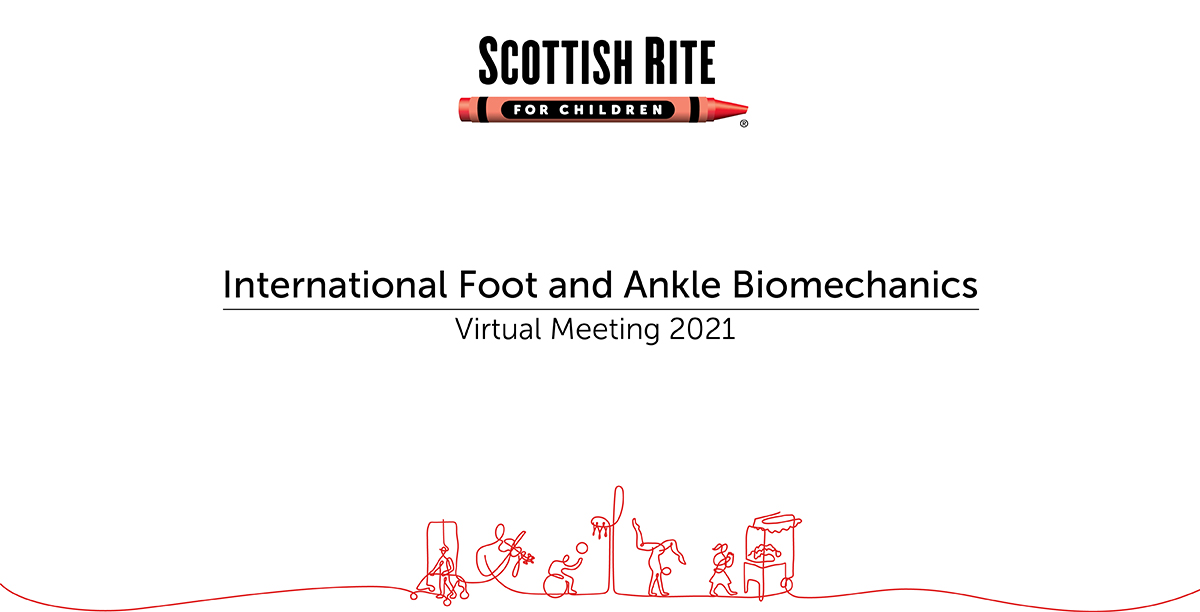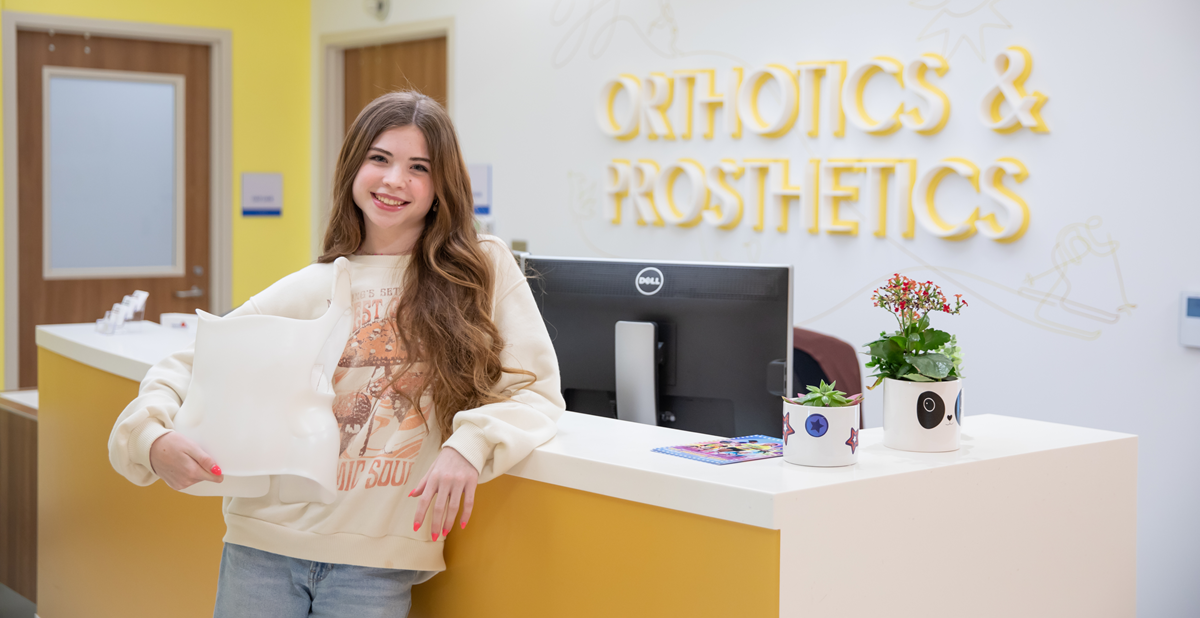
Apr 15, 2021 / Research & Innovation
Staff Present Latest Foot & Ankle Research at International Meeting
This week, staff from Scottish Rite for Children are attending the International Foot and Ankle Biomechanics (i-FAB) Virtual Meeting. The four-day conference has brought experts together virtually from around the world to present and discuss the latest leading-edge research on foot and ankle biomechanics.
This year, Scottish Rite had five projects selected for presentation – see below:
Through the ongoing research conducted at Scottish Rite, the multidisciplinary team collaborates to discover the best treatment options for pediatric patients with various foot and ankle conditions/deformities. Staff from our Movement Science division along with doctors who care for foot/ankle conditions, work closely to better understand how a child moves. Utilizing our state-of-the-art Movement Science Lab allows our experts to analyze what’s happening inside the body during movement so that the appropriate treatment plan can be put together.
This year, Scottish Rite had five projects selected for presentation – see below:
- Functional Implications of the Flat-Topped Talus Following Treatment of Idiopathic Clubfoot Deformity
- Quantitative Analysis of Talar Dome Morphology
- Redefining the Juvenile Bunion
- The Effect of Lateral Column Lengthening on Subtalar Motion: Are We Trading Deformity for Stiffness?
- Do We Really Need to Worry About Calcaneocuboid Subluxation During Lateral Column Lengthening for Planovalgus Foot Deformity?
Through the ongoing research conducted at Scottish Rite, the multidisciplinary team collaborates to discover the best treatment options for pediatric patients with various foot and ankle conditions/deformities. Staff from our Movement Science division along with doctors who care for foot/ankle conditions, work closely to better understand how a child moves. Utilizing our state-of-the-art Movement Science Lab allows our experts to analyze what’s happening inside the body during movement so that the appropriate treatment plan can be put together.



